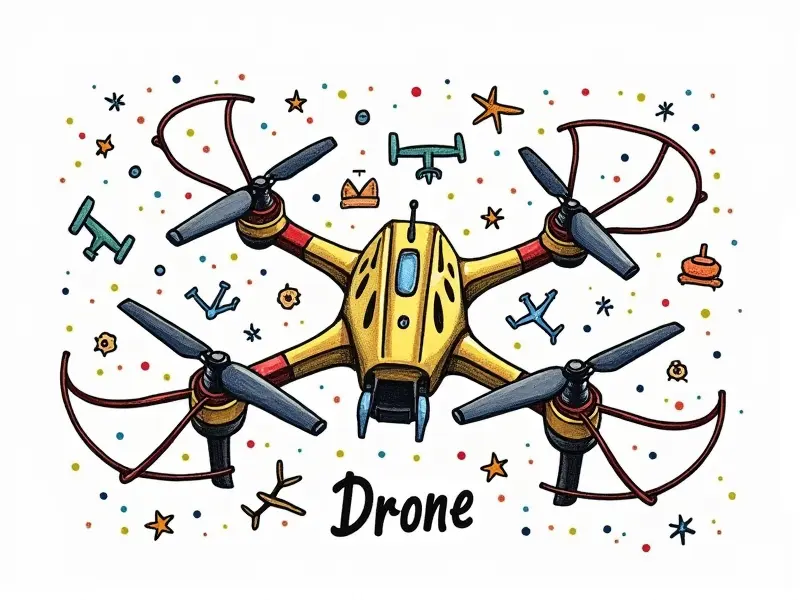How to make a racing drone?

The Ultimate Guide to DIY Racing Drone Build
Welcome to the world of FPV (First Person View) drone racing! Building your own racing drone can be an exhilarating and rewarding experience. This guide will walk you through every step, from selecting parts to taking your first flight.
Beginner's Guide to Building Racing Drones
If you're new to the hobby, starting with a basic understanding of components is crucial. Here’s what you need:
- Frames: Choose lightweight and aerodynamic frames designed for racing.
- Motors: Opt for high-performance brushless motors that offer speed and efficiency.
- ESC (Electronic Speed Controllers): These control the motor's RPMs based on input from your transmitter.
- Battery: High-capacity LiPo batteries provide the power needed for sustained flight.
- Flight Controller: This is the brain of your drone, handling stabilization and other critical functions.
Quick Start: Making an FPV Drone
Getting started with building a racing drone can seem daunting, but it’s easier than you think. Follow these steps to get up and running:
- Select Your Components: Choose parts that fit your budget and performance needs.
- Assemble the Frame: Carefully mount each component according to instructions.
- Connect Electronics: Wire up ESCs, motors, flight controller, and battery.
- Install FPV Gear: Add a camera and video transmitter for first-person view.
- Calibrate and Test: Ensure everything is working correctly before your maiden flight.
From Parts to Flight: Racing Drone Assembly
The assembly process involves several key steps. Here’s a detailed breakdown:
Selecting the Right Frame
A good frame should be lightweight, durable, and aerodynamic. Popular choices include carbon fiber frames for their strength-to-weight ratio.
Choosing Motors and ESCs
Motors like 2208 or 2307 are ideal for racing due to their high RPM and efficiency. Match your motors with appropriate ESCs that can handle the power output.
Flight Controller Setup
The flight controller is crucial for stability and performance. Common choices include Naze32, Pixhawk, or Betaflight-compatible boards.
Battery Selection
Select high-capacity LiPo batteries with a discharge rate that matches your motor's requirements. A typical setup might use 4S 1300mAh batteries.
FPV Camera and Video Transmitter (VTX)
The camera should have a wide-angle lens for better visibility, while the VTX transmits video to your goggles or monitor in real-time.
Crafting the Perfect FPV Racing Drone
To build an exceptional racing drone, focus on optimizing performance and reliability:
- Weight Optimization: Minimize weight without compromising strength.
- Battery Management: Use efficient power management systems to extend flight time.
- Tuning Flight Controller: Fine-tune parameters for optimal performance and stability.
Step-by-Step RC Racing Drone Assembly
Follow this step-by-step guide to assemble your racing drone:
- Gather All Components: Ensure you have all necessary parts before starting assembly.
- Mount Frame and Motors: Securely attach motors to the frame using motor mounts.
- Connect ESCs: Wire ESCs to motors and flight controller.
- Install Flight Controller: Mount it securely on the frame, ensuring proper orientation.
- Battery Installation: Connect battery leads to ESCs and flight controller.
- Add FPV Gear: Install camera and VTX in a position that provides clear visibility.
Easy Steps for Creating a Racing Drone
Building your first racing drone can be simplified into these easy steps:
- Select Components: Choose parts based on performance and budget.
- Assemble Frame: Mount motors, ESCs, flight controller, and battery.
- Install FPV Gear: Add camera and VTX for first-person view.
- Test and Calibrate: Ensure all components are working correctly before flying.
Build Your First Racing Drone Today!
Now that you have a comprehensive guide, it’s time to start building. Remember, practice makes perfect—don’t be discouraged by initial challenges. Enjoy the process and the thrill of flight!
DIY FPV Drone: From Scratch to Flight
This section covers everything from selecting parts to taking your first flight:
- Selecting Components: Choose high-quality, performance-oriented parts.
- Assembly Process: Follow detailed steps for mounting and wiring components.
- Tuning and Testing: Calibrate your drone to ensure optimal performance.
The Ultimate Guide to Assembling FPV Racing Drones
This comprehensive guide covers all aspects of building a racing drone, from selecting parts to fine-tuning for peak performance. Follow these steps to build the perfect FPV racer:
- Component Selection: Choose high-performance motors, ESCs, and flight controllers.
- Assembly Steps: Carefully mount each component according to instructions.
- Tuning Parameters: Adjust settings for optimal stability and responsiveness.
How to Construct an FPV Racing Drone
Building your own FPV racing drone is a rewarding experience. Follow these detailed steps to create a high-performance racer:
- Select Components: Choose lightweight, durable parts for optimal performance.
- Assemble Frame: Mount motors and ESCs securely on the frame.
- Install Electronics: Connect flight controller, battery, camera, and VTX.
- Tune Flight Controller: Adjust parameters for stability and responsiveness.
Conclusion
Building your own FPV racing drone is a thrilling adventure that combines creativity, engineering, and passion. By following this guide, you’ll be well on your way to assembling a high-performance racer capable of delivering an exhilarating flying experience. Happy building!

